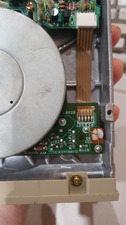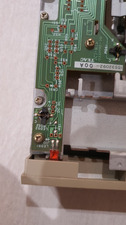On TEACs the upper part is the sensor, lower is IR LED. Usually the sensor will present high impedance that drops low when it is illuminated by the LED. To create a write enabling bypass you'd short the sensor (preferably via a resistor and not just a wire, try 100 ohms first).
EDIT: You want to have a switch for that though. TEACs do not have a separate media present sensor, floppy insertion/removal is done via the WP sensor as well. The drive might not operate properly if the sensor is never occluded. I never actually tested this though so you can try without a switch first. One thing that will not happen is the motor will not turn on for a moment when the floppy is inserted, this helps to center it better so you might sometimes end up with poor media vs spindle aligment. That will affect how well the head follows the track. It's not super critical but you need to know that if you want to read, or "refresh" the floppies - if you end up with a rewritten floppy that doesn't work well on other drives you might need to repeat the writing process, or even do some media erasing with a magnet first.

